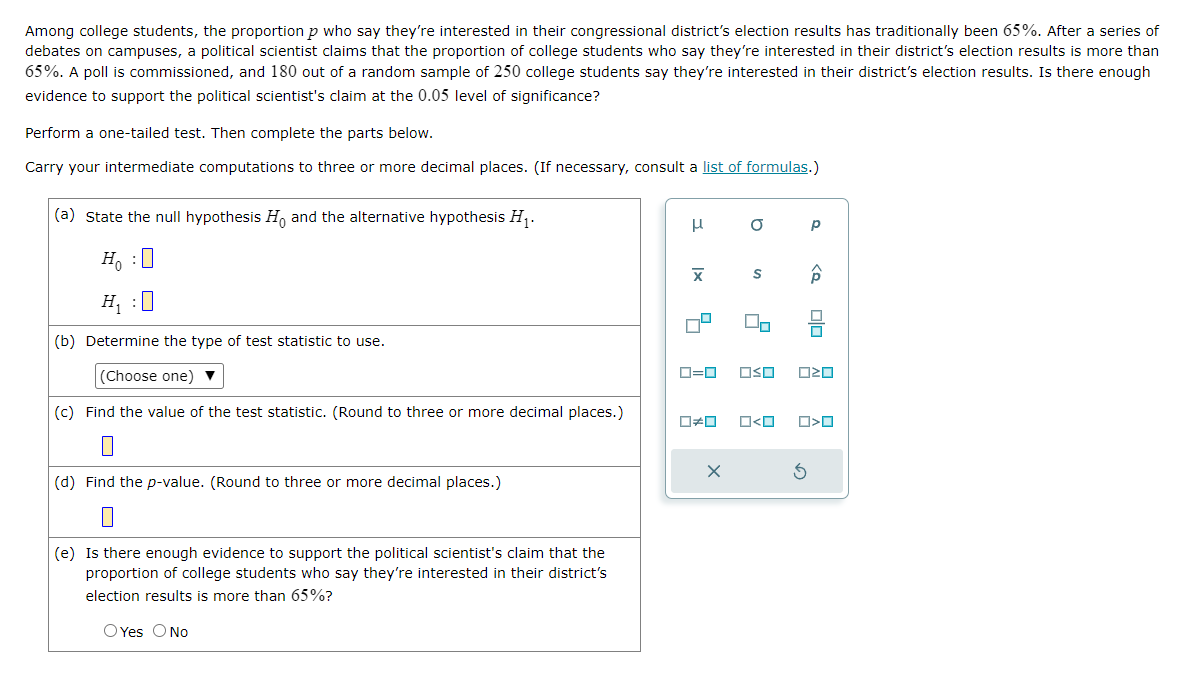Among college students, the proportion p who say they’re interested in their congressional district’s election results has traditionally been 65%. After a series of debates on campuses, a political scientist claims that the proportion of college students who say they’re interested in their district’s election results is more than 65%. A poll is commissioned, and 180 out of a random sample of 250 college students say they’re interested in their district’s election results. Is there enough evidence to support the political scientist's claim at the 0.05 level of significance? Perform a one-tailed test. Then complete the parts below. Carry your intermediate computations to three or more decimal places. a.) State the null hypothesis H0 and the alternative hypothesis H1. b.) Determine the type of test statistic to use (Z, t (with t, degrees of freedom is needed), Chi-Square, or F). c.) Find the value of the test statistic. (Round to three or more decimal places.) d.) Find the p-value. (Round to three or more decimal places.) e.) Is there enough evidence to support the political scientist's claim that the proportion of college students who say they're interested in their district's election results is more than 65%?
Among college students, the proportion p who say they’re interested in their congressional district’s election results has traditionally been 65%. After a series of debates on campuses, a political scientist claims that the proportion of college students who say they’re interested in their district’s election results is more than 65%. A poll is commissioned, and 180 out of a random sample of 250 college students say they’re interested in their district’s election results. Is there enough evidence to support the political scientist's claim at the 0.05 level of significance?
Perform a one-tailed test. Then complete the parts below.
Carry your intermediate computations to three or more decimal places.
a.) State the null hypothesis H0 and the alternative hypothesis H1.
b.) Determine the type of test statistic to use (Z, t (with t, degrees of freedom is needed), Chi-Square, or F).
c.) Find the value of the test statistic. (Round to three or more decimal places.)
d.) Find the p-value. (Round to three or more decimal places.)
e.) Is there enough evidence to support the political scientist's claim that the proportion of college students who say they're interested in their district's election results is more than 65%?

Step by step
Solved in 5 steps with 2 images






